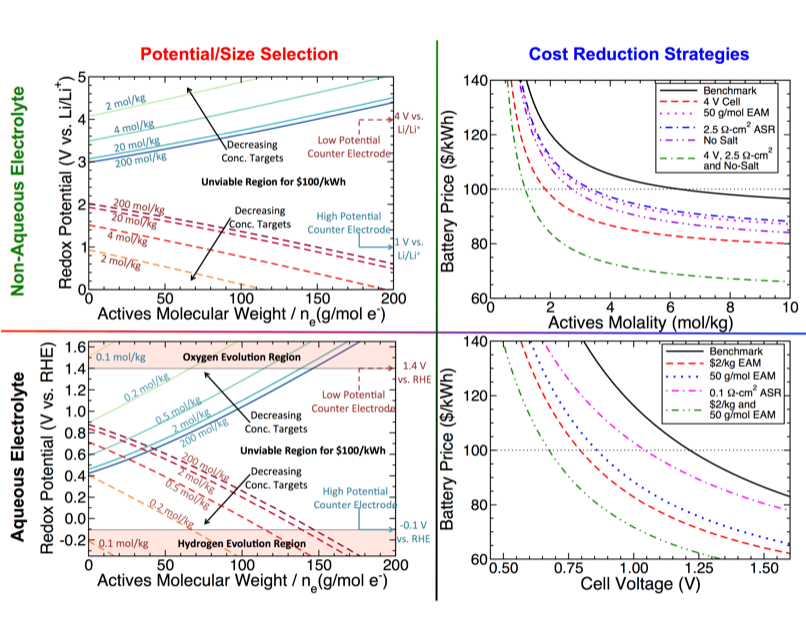
Scientific Achievement
Techno-economic analysis shows that design challenges for non-aqueous batteries include minimizing salt content and dropping redox-active species concentration to moderate levels, while aqueous batteries are sensitive to only redox-active material cost and cell voltage due to low area-specific resistance and supporting electrolyte costs.
Significance and Impact
Redox flow batteries show promise for grid-scale energy storage applications but presently are too expensive for widespread adoption. Electrolyte material costs of flow batteries constitute a sizeable fraction of redox flow battery price.
Research Details
- We developed a techno-economic model for redox flow battery (RFB) electrolytes.
- Electrolyte costs account for redox active material, salt, and solvent components with reactor, balance-of-plant, and additional costs considered.
- Design maps to build $100 kWh-1 RFBs guide electrolyte materials selection.
- Multiple pathways to decreasing RFB electrolyte costs are proposed.

